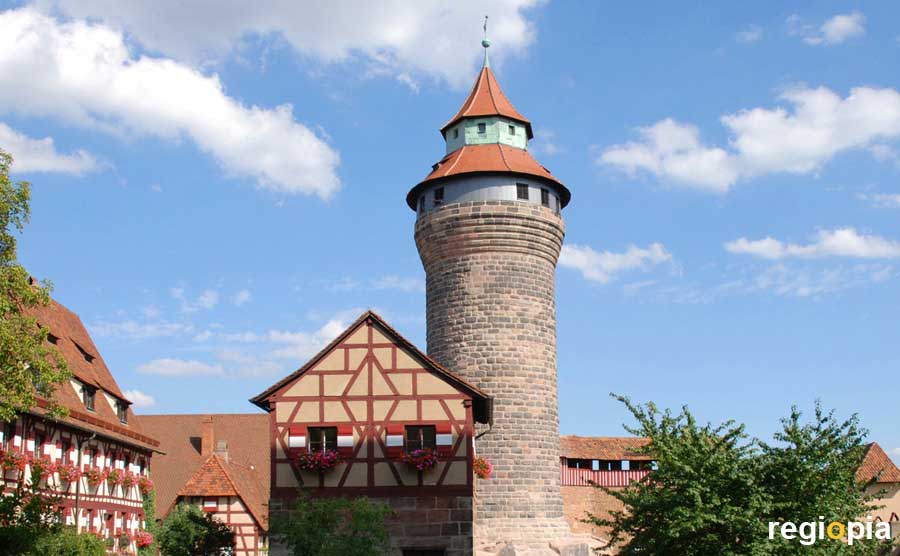
Nuremberg Castle
History of Nuremberg Castle
The Nuremberg Castle was first mentioned in a document in 1050, when Emperor Heinrich III stayed here. Archaeological finds indicate that the castle is at least 100 years older. The German emperors did not have a permanent residence, but they often came to Nuremberg and steadily expanded their castle until the 15th century. In the 16th century the bastions were added, which the Italian fortress builder Antonio Fazuni designed in the north and west of the city fortifications. Today the Imperial Castle is the symbol of Nuremberg.
The castle
The castle area consists of three parts. The Kaiserburg (Emperors Castle), the Burggrafenburg (Castle of the Earl) and buildings erected by the Nuremberg citizenship. These areas used to be separated from each other but have grown together over time. The approximately 200 m long castle area stands on a sandstone cliff and dominates the silhouette of Nuremberg. Under the protection of the castle, Nuremberg developed into one of the most important cities in Europe of the Middle Ages.
Struggle for power
The emperor used the castle as palace and appointed an administrator (Earl) to represent his interests in the region. The Earl built his own castle nearby. When Nuremberg was granted imperial freedom in 1219, the Earl was no longer the ruler of the city. But he ruled Franconia, the surrounding land from the castle. The citizens wanted to get rid of the Earl and built watchtowers in front of the entrances to his castle. With these gates they could control the Earl. They built the "Luginsland" watchtower not only to look into the distance land, but also to keep an eye on the Earl. The dispute escalated until the citizens occupied the Castle of the Earl in 1389. They had to give the castle back to the Hohenzollern family, but the Earls no longer felt safe in here. The Earl finally sold the castle to the city of Nuremberg in 1427.
Tourist Attractions
The symbol of Nuremberg Castle is the Sinwellturm. The round tower was built as a keep and can be climbed. From above you can enjoy the most beautiful view over Nuremberg and the surrounding area. The Tiefe Brunnen (deep well) is located in the well house. The 50 m deep shaft of the well supplied the castle with water. As a result, longer sieges could be sat out. The Fünfeckturm (pentagonal tower) was the keep of the Burggrafenburg. It was built in the 12th century and is the oldest building in the city of Nuremberg. The Imperial Castle Museum is located in the former bower. If you want to see Nuremberg Castle from the inside, you should take part in a guided tour, as many areas are otherwise inaccessible.
For opening times, admission prices and guided tours and more information see the link.
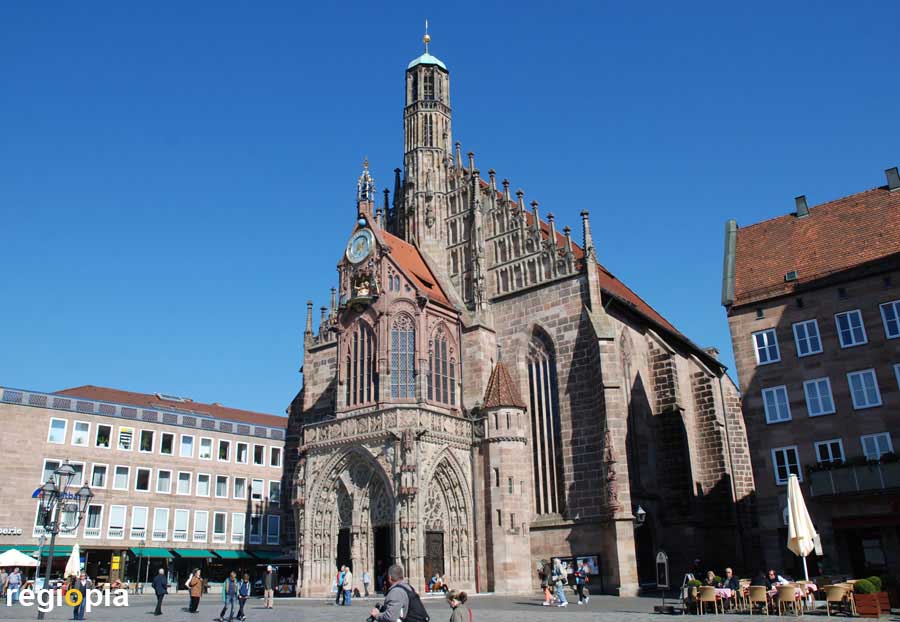
Frauenkirche
Until the Persecution of Jews in 1349, when more than 500 Jews were burned, this was the location of the synagogue and the Jewish Quarter. In the same year, Emperor Karl IV started to construct the Frauenkirche (Church of our Lady). In 1358 the Frauenkirche was consecrated and served as imperial church.
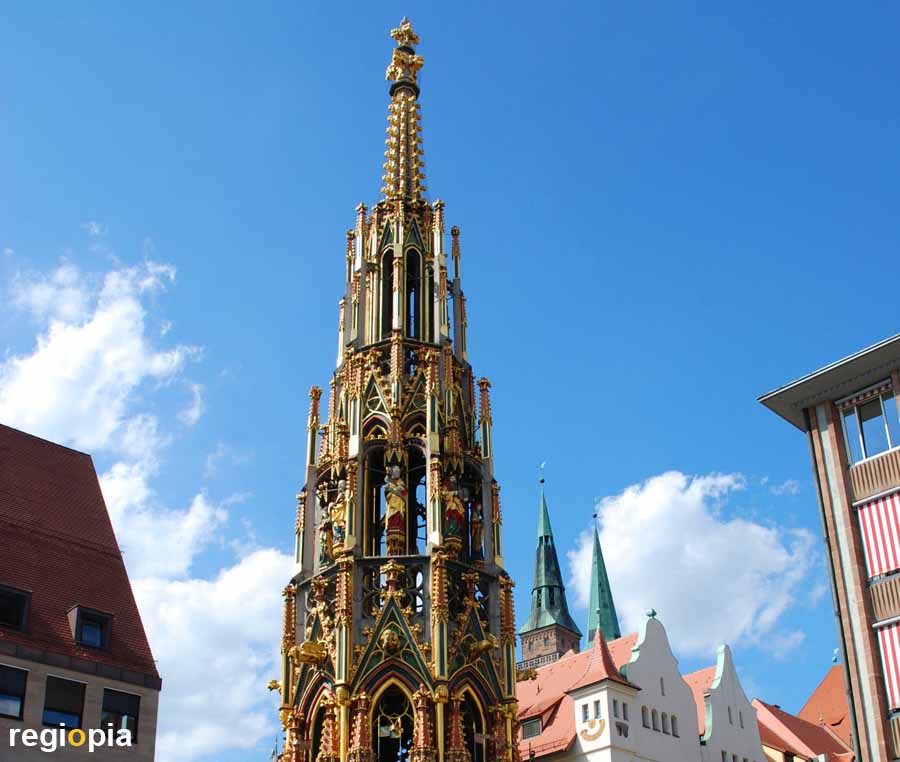
Schöner Brunnen
The "Beautiful Fountain" was built in 1396. Like a Gothic spire, the fountain reaches up in the sky 19 meters. The original Schöner Brunnen is shown in the Germanisches Nationalmuseum in Nuremberg. The fountain on Hauptmarkt is only a copy built in 1903. Who is turning the brass ring of the grid, while thinking about something beautiful, her/his wishes should be fulfilled. (no warranty)
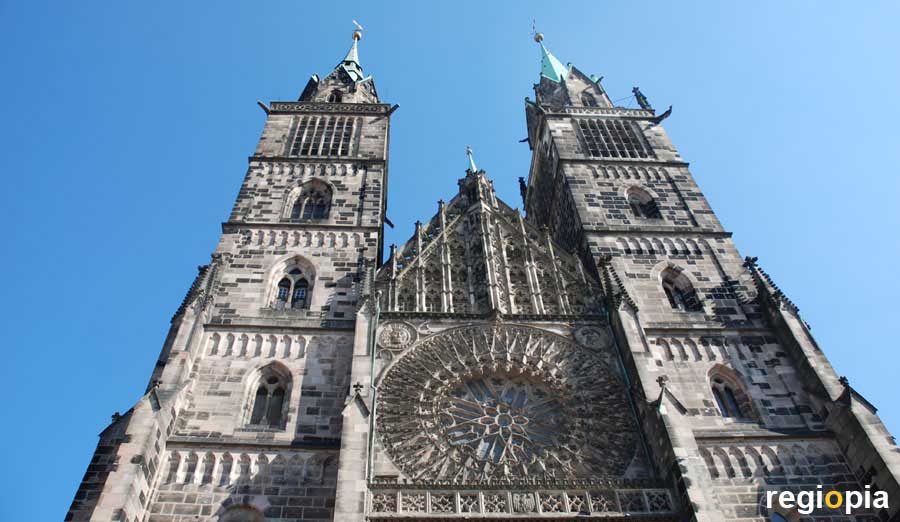
St. Lorenz Kirche
The construction of the Gothic "St. Lawrence Church" began in the middle of the 13th century. Laurentius is the patron of all professions connected to fire, as he was grilled as a martyr on a grating. The church was heavily damaged during WW2 and rebuilt from 1949 onwards.
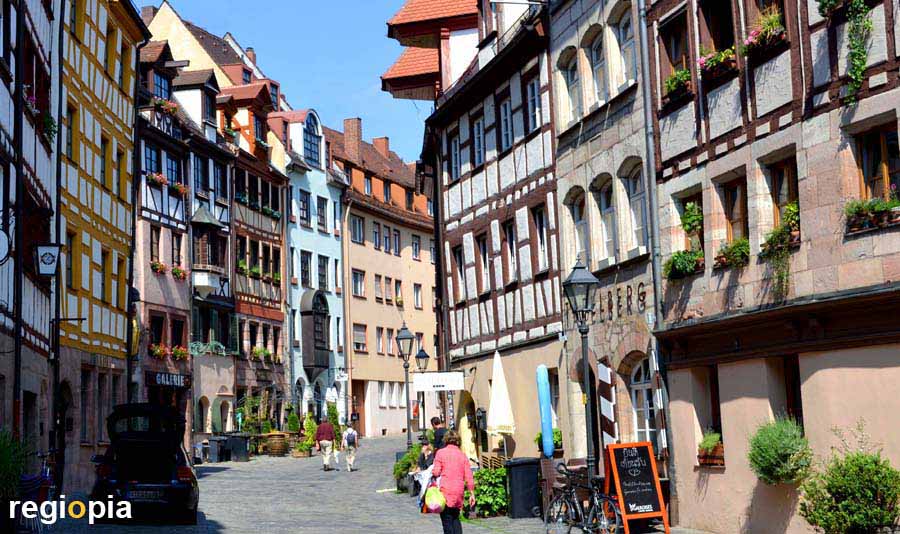
Weißgerbergasse
The "Weißgerbergasse" is a curved street with lots of half-timbered houses. The "Weißgerbergasse" is regarded as the most beautiful street in Nuremberg. Here you will also find many restaurants and bars. "Weißgerbergasse" can be translated as street of the whittawers.
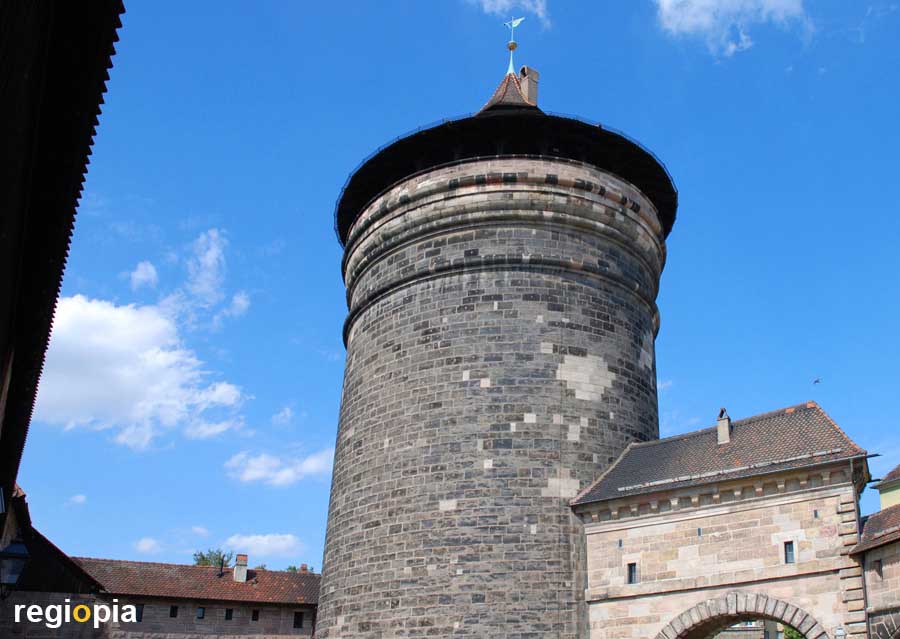
Spittlertorturm
The "Spittlertorturm" was built with the construction of the city wall around 1400. Four towers were erected at the four corner points of the wall. The four towers were expanded in 1564 and got their massive shape.
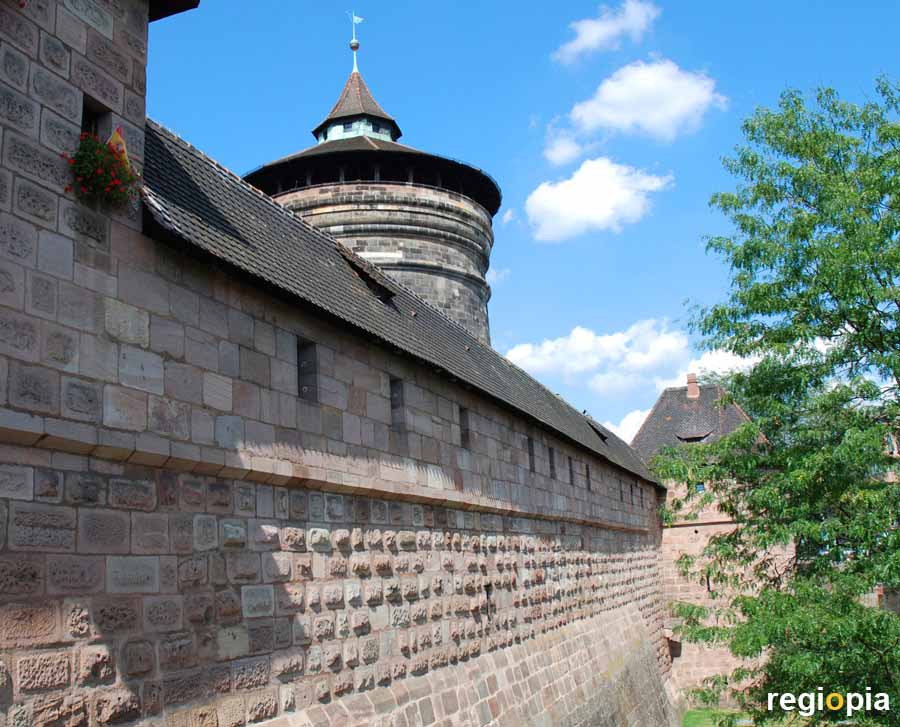
Frauentor und Königstor
The "Königstor" Kings Gate of the city wall, is the main entrance to the old town of Nuremberg. Next to the "Königstor" stands the "Frauentorturm" Womans-gate-tower, which was built together with the "Spittler Turm". There is a handicraft market at the citywall, near the "Königstor".
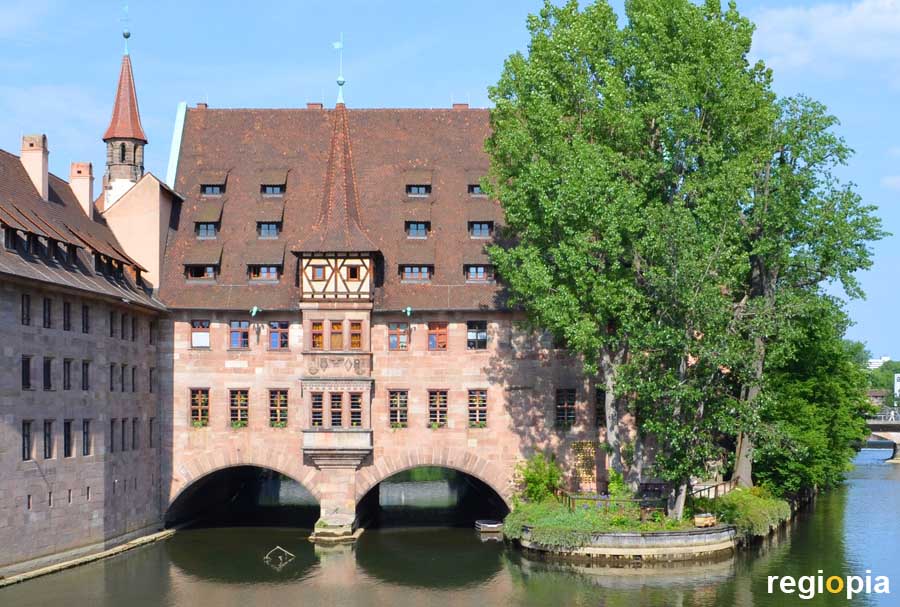
Heilig-Geist-Spital
The "Hospital of the Holy Spirit" was founded in 1339 by Konrad Gross, the richest man of the city. The hospital took care of the sick, poor and of old citizens. The "Heilig-Geist-Spital" was destroyed in 1945 but rebuilt in 1953.
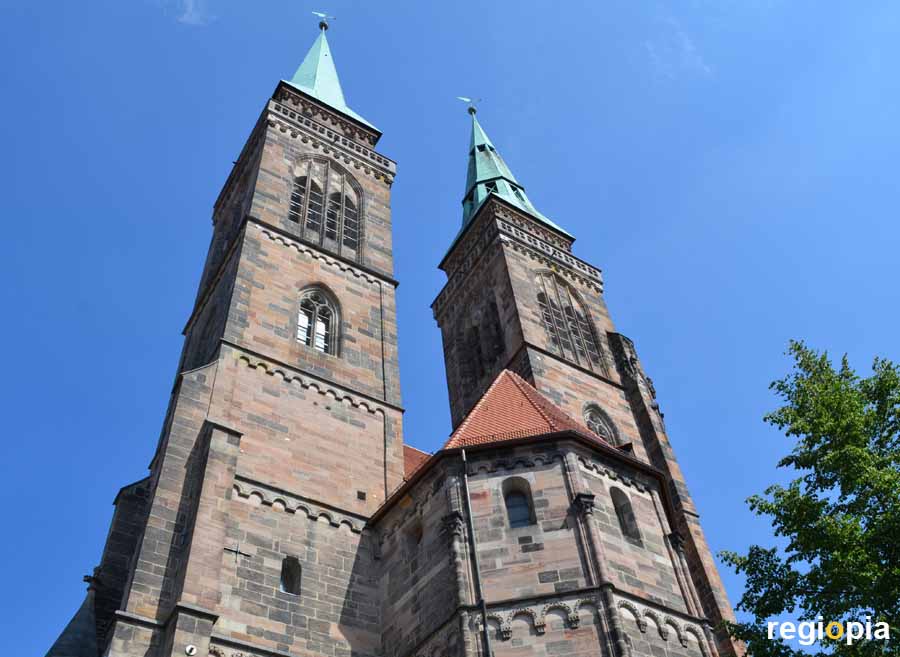
St. Sebald
The Protestant Church of Sebaldus houses the tomb of Sebaldus, the city saint. He was a hermit in Franconia and was revered as a saint. Another feature of the church, built in 1273, are the two choirs in the east and the west of the church.
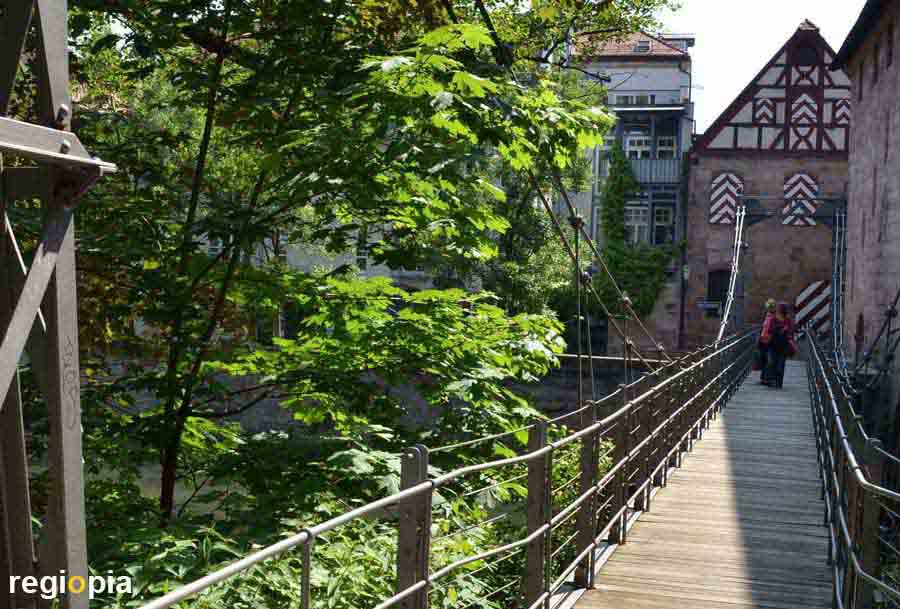
Kettensteg
Hidden on the edge of the old town, there is a technical sensations of Germany. The "Kettensteg" is the oldest free-standing suspension bridge in Germany, built by Conrad Georg Kupper in 1824. The 68 m long pedestrian trail, spans over the river Pegnitz. On the north bank, there is the cozy beer garden "Kettensteg".
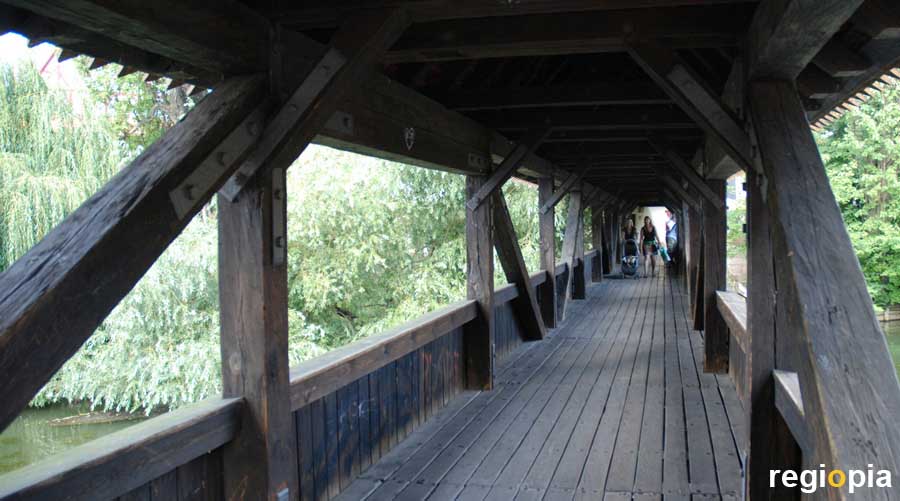
Henkersteg
When the city wall became superfluous by the construction of the New City Wall around 1400, the executioner moved into the former watchtower. The bridge over the Pegnitz that leads to the hangmans tower was called "Henkersteg" (Henker = Hangman). The covered wooden bridge was reconstructed in 1954.
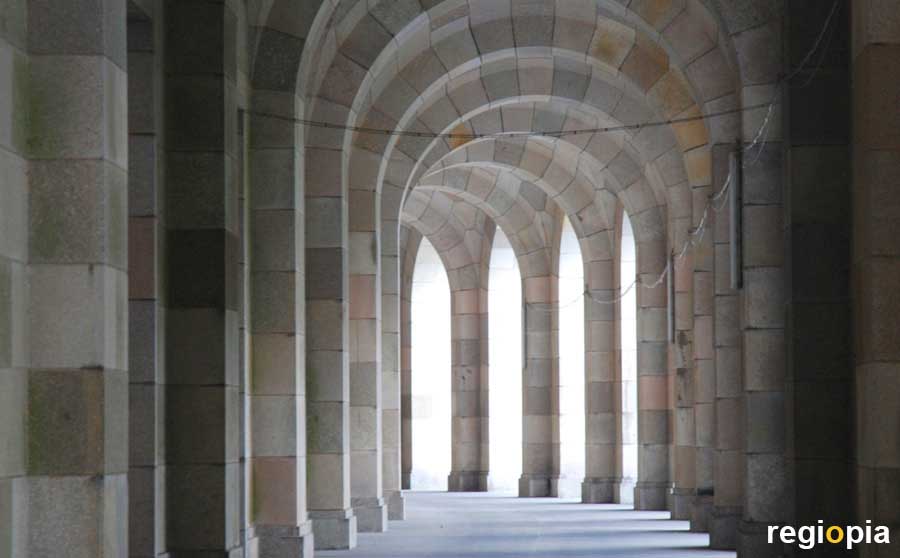
NSDAP Kongresshalle
Albert Speer and Ruff projected the "Congress hall" for 50,000 visitors on the "Reichsparteitagsgelaende". The huge hall for NSDAP events was started in 1935, but never completed.
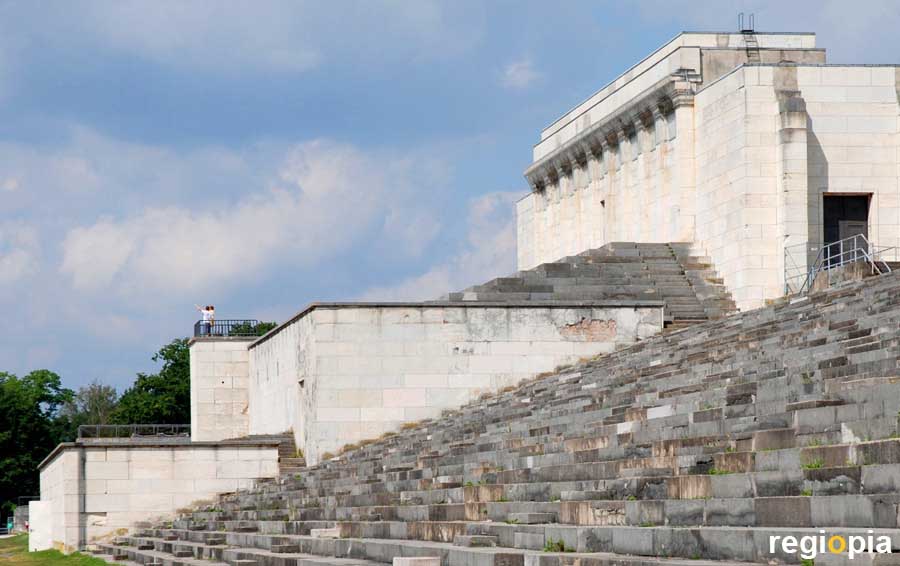
Zeppelinfeld
Albert Speer designed the Zeppelin field for NSDAP mass parades. Anti-aircraft headlights directed into the sky turned the area into a huge "light dome". In the grandstand, the leader took off the parade. After the defeat of the "Third Reich", the eagle with the swastika was blown up by the Americans as symbol of their victory. The "Zeppelin field" was also a place of great importance for the winners. Today the grandstand is decaying, a race track leads through the "Zeppelinfeld" and is fenced off. Nuremberg still has no concept how to deal with the historical legacy of the National Socialists remains.
Map of sights in Nuremberg
ads
Nuremberg Germany
ads
Welcome to Nuremberg
Nuremberg was one of the leading cities in Europe in the Middle Ages. Albrecht Dürer and Martin Behaim's globe carried the city's name all over the world. The imperial city of Nuremberg was almost a capital through the Reichstag. However, at that time the emperors were still traveling through the country with their court and had no permanent residence.
The center of Nuremberg is still shaped by the medieval buildings, although the war has left wounds in the historic city.
The city has still not found a sovereign way of dealing with the remains of the Nazi past. Adolf Hitler elevated Nuremberg to the city of Nazi party rallies and started megalomaniac projects on the Nazi party rally grounds.
ads
Nuremberg specialties
"Nürnberger Rostbratwürste" and "Nürnberger Lebkuchen" are known throughout Germany. You can get both in Nuremberg all year round. The grilled sausages can be found on almost every corner. One of the most famous places to enjoy the bratwurst is in the Bratwurthausle next to the Church of St. Sebaldus.
Lebkuchen (Gingerbread) is also everywhere on sale and every producer has the best recipe and the best ingredients. The best-known brands include "Lebkuchen Schmidt" on the Hauptmarkt and "Fraunholz" on Bergstrasse.


